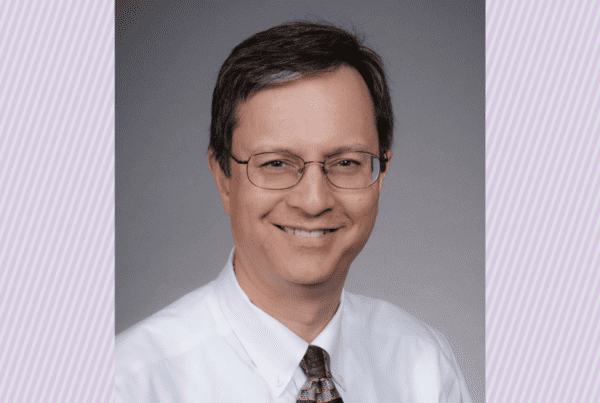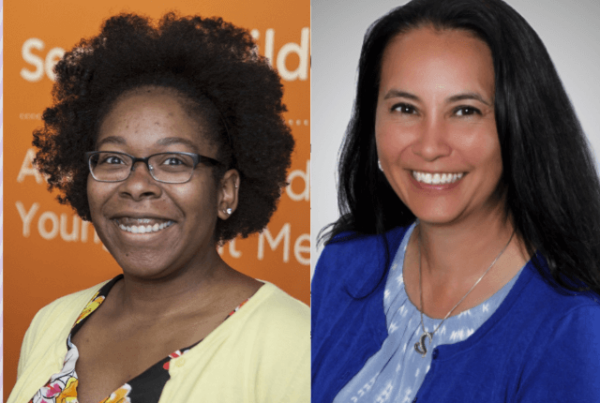At times, the operating room of Manuel Ferreira, MD, PhD, resembles that of a punk rock concert.
“I play music — I listen to the Ramones and the Pixies,” says Ferreira. “This is during the positioning, the opening, the exposing of the tumor and when the carpentry work is going on. You’ll also hear a lot of saws and drills.”
And then, silence.
“Once the microscope goes in, all the lights and music turn off,” says Ferreira. “The only light in the room is from the microscope and all you hear is the patient’s heartbeat.”
For hours on end, quiet precision envelopes the operating room. Then, the volume turns back up.
“Once the tumor is out and all the nerves are healthy, the lights go back on, the music is back on,” says Ferreira.
Contrasts like these — silence and noise, dark and light — shape Ferreira’s work as a neurosurgeon who treats brain and skull base tumors at UW Medicine’s Alvord Brain Tumor Center and the Neurological Surgery Clinic.
Ferreira, UW Medicine’s chief of neurological surgery, shares what it’s like to be a neurosurgeon and how he ended up where he is today.
Brain and soul
Ferreira’s interest in medicine stems back to his childhood.
“I grew up on a small farm in the garlic capital of the world: Gilroy, California,” says Ferreira. “At a young age I enjoyed caring for animals. I worked for a veterinary practice while I was in high school. That sparked my interest in pursuing human medicine. And then as an undergraduate I became premed and the rest was history.”
From the veterinary office to medical school, the brain remained at the top of Ferreira’s interests.
“I’ve always been intrigued by the brain,” says Ferreira. “There are two aspects that intrigued me. One, the brain is the only organ you can’t transplant. And two, there is this spiritual connection that the brain has between the mind and soul. I knew that would keep me intrigued for my lifetime.”
East and West
Ferreira went to medical school on the East Coast at Georgetown University, then headed up the coast to Massachusetts General Hospital.
“After Georgetown, I went to Mass General for a 7 ½ year residency. I knew I wanted to do skull base surgeries and was planning to go back to Mass General after a fellowship at UW Medicine.”
What started as a fellowship turned into a career.
“I was only planning to be at UW Medicine for one year, but I never went back,” says Ferreira. “When we came to Seattle, my wife, who is from the East Coast, and I decided to raise a family here. That was in 2009.”
Rare and renowned
Since settling into the West Coast over a decade ago, Ferreira has diligently incorporated research and education into his neurosurgery practice.
“When I look at my job, I think of three pillars,” says Ferreira. “First, there’s clinical excellence. Second, training the next generation of providers. And then there’s the research piece: pioneering treatment for my patients.”
As one of around 100 dedicated skull base surgeons in the U.S., Ferreira feels a responsibility to integrate clinical excellence, education and research into his work.
His small field focuses on rare diseases that involve pituitary tumors, aneurysms and chordomas — a type of cancerous tumor that can occur anywhere along the spine, from the base of the skull to the tailbone.
“There are around 200 diagnoses of these tumors per year,” says Ferreira. “We operate on 30 to 50 per year because we’ve developed a concentrated center of excellence.”
His patients travel from around the globe to go to the Alvord Brain Tumor Center for these highly specialized, lifesaving surgeries.
“A lot of my patients are from overseas and around the country, though my overseas population has shut off since the outbreak,” notes Ferreira.
Questions and answers
This internationally recognized neurosurgery outpost harbors rare and valuable research opportunities for Ferreira to capitalize on.
“For instance, with chordomas, we start primary cultures and we study these samples on a molecular level,” explains Ferreira. “Are there biomarkers for good-acting tumors and for bad-acting tumors? What are the treatments for those tumors? If we, skull base surgeons, don’t ask these questions about how we treat these lesions, no one else will.”
Behind every research study is a patient putting their hope into Ferreira’s hands.
“A lot of patients that come to me in particular don’t have many other places to go,” says Ferreira. “They’ve had prior surgeries from other centers, they’ve exhausted their radiation and chemotherapy modalities. They’ve come here as the last stop on the train.”
The gravity of each patient’s situation weighs heavy on Ferreira, but it is also what motivates him to extensively prepare for his surgeries — and to teach the next generation of neurosurgeons.
“Before these challenging operations, I think about plans A through Z,” says Ferreira. “I always tell my residents that defense wins championships. I’m constantly thinking about what steps might go wrong during the surgery. What happens if I hurt this vessel? What happens if I bypass this vessel? What part of the tumor is safe to leave and what part needs to be removed?”
These questions scroll through Ferreira’s mind as he plans for each surgery.
“I’m always trying to go through each catastrophic event to make sure I’m prepared for it,” says Ferreira. “Every night before I go to bed, I’m thinking of that.”
Work and play
Ferreira decompresses after these complex and extensive surgeries — which typically take 6 to 12 hours, though he recently completed a 26-hour surgery — by hitting the pavement or trails.
“I’m an avid runner,” says Ferreira. “My 14-year-old daughter is an avid runner as well. We have a goal of running 528 miles this summer, and we’re about halfway there. I also have two Hungarian pointers, so we go running every day.”
The time he spends with his family is a priority for Ferreira — and, at times, challenging to balance with work.
“The difficult part is doing my job to my best ability and having a home life,” says Ferreira. “It requires devotion. Every few weeks I have to check in with myself to make sure my home life and job are both good.”
As Ferreira strikes that balance, he recognizes the joys of being a neurosurgeon.
“I love taking care of patients,” says Ferreira. “My surgeries are very challenging. I love teaching the next generation of neurosurgeons. I can’t imagine doing anything else.”


